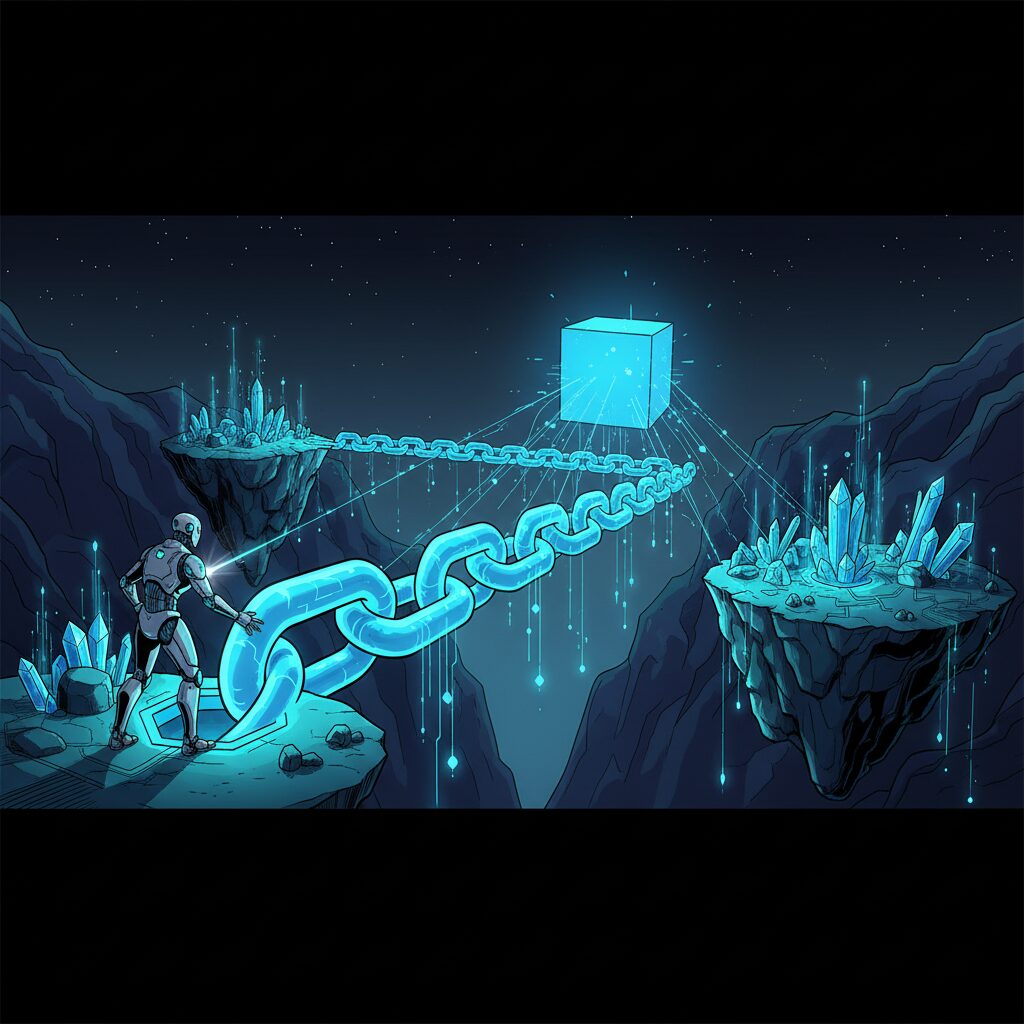XT.com and Dash on Crypto’s Founding Ideals: Speed, Privacy, and Decentralization

The initial vision for cryptocurrency was straightforward: to create a currency that belonged to everyone, could be transferred instantly, and protected the privacy of its users.
A Foundation of Speed and Trust
Founded in 2014, Dash emerged as an experiment to make digital currency faster, more practical, and truly decentralized for everyday life. While many projects chased speculative trends, Dash has remained focused on its core mission. This commitment was highlighted in an October 2025 online discussion hosted by XT.com, featuring Joël Valenzuela, Dash’s Head of Business Development, and Akshay, Global Business Director at XT.
Valenzuela shared a personal testament to the project’s vision. “I experimented on myself to see if cryptocurrency could truly replace the traditional financial system,” he said. “After years of living entirely in cryptocurrency, I can say with certainty that Dash has proven this to be feasible.”
Dash achieves its blend of speed and reliability through a unique two-tier network architecture. The first layer is a Proof-of-Work (PoW) blockchain secured by the X11 mining algorithm, which produces a new block roughly every 2.5 minutes. The second layer consists of a network of masternodes—servers run by users who have staked 1,000 DASH. This masternode network handles advanced functions that set Dash apart.
Two of its key innovations are InstantSend and ChainLocks. InstantSend confirms transactions in under two seconds, while ChainLocks prevents blockchain reorganizations, making transactions irreversible once confirmed. “Dash transactions are instant and permanent,” Valenzuela explained. “Once you send it, it’s done. It’s used like cash: instant confirmation, reliable and secure, giving merchants a lot of peace of mind.”
Pioneering Decentralized Governance
Beyond technical features, Dash’s masternodes are central to its governance model. The project is managed by one of the industry’s earliest and longest-running Decentralized Autonomous Organizations (DAOs). This structure is self-funded, with 10% of every block reward allocated to a community treasury.
Masternode operators vote on how to use these funds, directing resources toward development, marketing, and ecosystem integrations. “Our DAO has been operating for over a decade,” Valenzuela noted. “It is self-funded, makes independent decisions, and maintains independence from venture capital.” This financial autonomy has allowed Dash to weather multiple market cycles while continuing to build on its long-term goals.
Evolving Beyond Simple Payments
As the network matured, the Dash team recognized that a seamless payment experience requires more than just speed. To make crypto as intuitive as sending a message, it needed a data layer for features like usernames and contact lists. Instead of adopting a standard Layer 2 solution, Dash developed a dual-chain architecture.
This system features two collaborative blockchains run by the same validators: one dedicated to payments and the other to data and identity. This new data network, known as the Dash Platform, supports decentralized storage and a user-friendly username system. Through the DashPay wallet, users can add contacts, send encrypted messages, and transfer funds using simple usernames instead of complex addresses. “The data layer handles communication, and the payment layer handles funds,” Valenzuela stated. “This is a unified monetary system.”
This continued innovation has drawn positive notice. Akshay from XT.com observed, “It’s very rare for a project to maintain this level of innovation after ten years. Dash isn’t just building on its past; it’s preparing for the next era of blockchain.”
A Balanced Approach to Privacy
Privacy has been part of Dash’s DNA since its inception as Darkcoin. Over the years, its approach has evolved to balance user protection with regulatory compliance. The project offers an optional privacy feature called CoinJoin (also known as PrivateSend), which allows users to mix their transactions with others to obscure the flow of funds.
This optionality ensures the network remains transparent and compliant for standard transactions while providing users with a tool for financial privacy when needed. “Privacy is not a crime, but a prerequisite for mass adoption,” Valenzuela argued. “Nobody wants to live on a public ledger where everyone can see their paychecks and spending records.”
As payment giants like PayPal and Circle begin exploring confidential transactions, Dash’s long-held philosophy seems more relevant than ever. With plans to launch smart contract capabilities in 2026, Dash continues its journey from a simple payment coin to a complete digital ecosystem built for real-world use.
A Strategy for Real-World Application
At its core, Dash’s design philosophy centers on balancing robust security and transparency with built-in privacy for its users. This approach positions it as one of the few blockchain networks focused on individual financial sovereignty.
A pivotal step toward mass adoption came in 2025 with the launch of “Project Three Billion.” This ambitious initiative aims to connect the Dash network with payment service providers globally, transforming the cryptocurrency from a speculative asset into a practical tool for daily life.
Crypto for Everyday Expenses Becomes a Reality
Dash is pushing beyond speculation and into practical, daily use with a series of partnerships designed to let people pay for essential services directly with crypto. Through collaborations with Swapin in Europe, Spritz in the U.S., Bitrefill in El Salvador, and Zypto in Asia and the Middle East, users can now settle rent, utilities, mortgages, and phone bills using Dash.
The system is designed for security and simplicity. These services are non-custodial, meaning users never lose control of their funds. Payments are automatically converted into local currency for settlement, streamlining the entire process. This initiative expands Dash’s potential reach to nearly half the world’s population and offers a powerful solution for cross-border payments. For instance, a worker in Malaysia can now pay their family’s electricity bill in the Philippines instantly, bypassing traditional banking hurdles.
According to one project representative, Dash has entered an “era of integration,” with a five-year vision where people can live entirely on the cryptocurrency globally. This is no longer an experiment but an emerging reality.
A Decade of Decentralized Governance
Long before Decentralized Autonomous Organizations (DAOs) became a popular trend, Dash was already operating one. Since 2015, the Dash DAO has managed its own treasury, proposal voting, and strategic planning through on-chain mechanics. A recent community vote adjusted the block reward distribution to allocate 60% to masternodes, 20% to miners, and the remaining 20% to the DAO itself. This change ensures a stable, long-term funding source for ecosystem development without changing the total supply.
This governance model, which has been active for nearly a decade, is one of the oldest in the crypto space. A project lead noted that true decentralization requires both structure and restraint, explaining that while leadership is important, control must remain with the community. “One thing we’ve learned is not to leave everything to the DAO to vote on,” he stated. “Different teams need to be able to build independently, while the DAO focuses on the overall direction.”
This self-sufficient model allows Dash to operate without relying on external investment, ensuring that every development reflects a genuine community consensus. Industry observers like Akshay from the XT.com exchange noted this difference, stating, “Working with Dash isn’t like communicating with a typical project team; it’s like working with a self-funded, transparent community.”
The Next Phase: Smart Contracts and Enhanced Privacy
Dash’s development roadmap is focused on boosting its programmability, scalability, and privacy. The upcoming Platform v3 will introduce a smart contract virtual machine, allowing developers to build decentralized applications (DApps) directly on the network’s data layer.
In parallel, the team is developing a “Confidential Transactions” feature that will hide transaction amounts and addresses by default while still allowing for necessary audits. This upgrade, combined with Dash’s existing privacy tools, aims to position it as one of the fastest and most private networks available. Project leadership described the goal as creating a combination of Monero and Solana: a network that is “private, high-speed, programmable, and truly practical.”
Interoperability is another key focus. The team plans to enable seamless communication with other blockchains, allowing users and developers to interact with Layer-2 networks and EVM-compatible chains, further expanding its ecosystem.
From Digital Payments to True Digital Cash
From its origins as Darkcoin to its current dual-chain architecture, Dash has steadily evolved from a “faster Bitcoin” concept into a comprehensive financial network built for real-world application. As its utility grows, access for traders and investors has also expanded, with exchanges offering both DASH/USDT spot markets for long-term holders and perpetual contracts for active traders seeking more strategic flexibility.
For millions of users, Dash represents a return to cryptocurrency’s original purpose: creating money that is free, private, and usable. With a foundation of decentralized governance and a clear vision for the future, the dream of “digital cash” is moving closer to reality.
What is Dash?
Dash is a cryptocurrency focused squarely on payments. It was designed from the ground up to provide a digital transaction experience that is instant, inexpensive, and privacy-conscious, positioning itself as a practical alternative to traditional cash and card systems.
Core Technology: Speed and Security
To deliver on its promise of instant payments, Dash utilizes a combination of proprietary technologies. Its InstantSend feature allows for transaction confirmations in a matter of seconds. This is secured by ChainLocks technology, which provides a robust defense against common blockchain threats like double-spending and network reorganization attacks.
The Dash Platform
Beyond its primary payment functions, the network includes the Dash Platform, a second-layer blockchain built to enhance user experience. This layer is dedicated to storing application data, user-friendly usernames, and digital identities, making cryptocurrency payments simpler and more intuitive for everyday users.
Real-World Adoption and Trading
Dash can be used for a variety of real-life expenses. Through integrations with partners like Swapin, Spritz, and Bitrefill, users can pay for bills, rent, and utilities directly with the cryptocurrency. For traders and investors, Dash is widely available on digital asset exchanges, supporting both spot trading for long-term holders and perpetual contracts for those engaging in leveraged trading or risk management.
A Decentralized Governance Model
The project operates under a Decentralized Autonomous Organization (DAO) governance model. Key network decisions are made by masternode operators, who vote on development proposals. To fund its own growth, the network allocates 20% of every block reward directly to a treasury managed by the DAO, ensuring a continuous budget for future development and ecosystem initiatives.
The Future of the Dash Network
Dash continues to evolve, with ongoing upgrades focused on expanding its capabilities. The development roadmap includes enhancements to its smart contract functionality, the introduction of confidential transactions for greater privacy, and improved cross-chain interoperability to better connect with the broader blockchain ecosystem.











